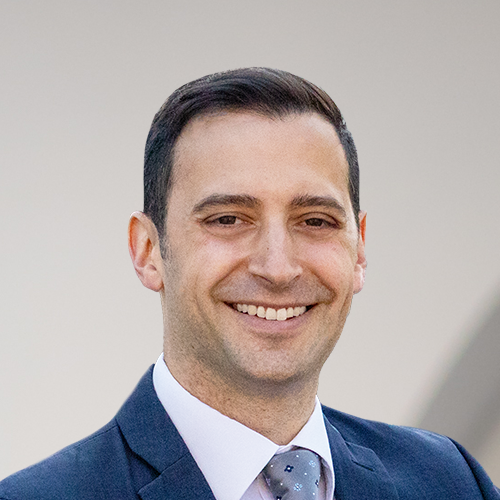
Today, the United States Supreme Court issued its decision in Gallardo v. Marstiller. This was a Medicaid lien case from the Court of Appeals for the Eleventh Circuit concerning the scope of the State Medicaid agency’s right to place a lien on a Medicaid recipient’s tort settlement. The unfortunate decision was a 7-2 majority, with only Justices Sotomayor and Breyer dissenting. Justice Thomas delivered the Opinion of the Court. The holding is that a Medicaid agency may place a lien for past medical expenses on the portion of a tort recovery that represents compensation for past and future medical expenses.
The case concerned a 2008 incident in Florida where Gianinna Gallardo (only 13 years old at the time), stepped off of a school bus and was hit by a truck. Today, she remains in a persistent vegetative state. Seeking over $20 million in damages, the litigation against the tortfeasors resulted in a settlement of $800,000. The settlement expressly allocated $35,367.52 as compensation for past medical expenses, with all other items of damages unallocated.
Florida Medicaid paid over $860,000 in medical expenses at the time of the settlement. Florida’s Medicaid Third Party Liability Act provides that the Medicaid agency is entitled to one-half of the beneficiary’s settlement after deducting 25% for attorney fees. The statutorily-created presumption that this amount represents the portion of the tort settlement that is for “past and future medical expenses.” That presumption can then be rebutted through an administrative hearing.
Here, Florida’s statute entitled it to $300,000 of Ms. Gallardo’s $800,000 settlement, even though Ms. Gallardo’s counsel argued that only about $35,000 represented compensation for past medical expenses.
Florida’s argument was that it was entitled to collect its claimed lien for medical expenses already paid, from the portion of the settlement that represented compensation for past and future medical expenses.
The Supreme Court agreed with Florida, concluding that the text of the Federal Medicaid Act allows it to collect from the past and future medical expense components of a tort recovery. This increases the pool of funds available from which Medicaid may recover.
The way that Justice Thomas worded his “question presented” framed the basis of his argument: “The question presented is whether §1396k(a)(1)(A) permits a State to seek reimbursement from settlement payments allocated for future medical care.” The fact the question presented relied solely on the interpretation of one statutory provision when there were several others at issue in this case, speaks volumes. He went on to conclude that:
The plain text of §1396k(a)(1)(A) decides this case. This provision requires the State to acquire from each Medicaid beneficiary an assignment of “any rights . . . of the individual . . . to support . . . for the purpose of medical care . . . and to payment for medical care from any third party.” §1396k(a)(1)(A). Nothing in the provision purports to limit a beneficiary’s assignment to “payment for” past “medical care” already paid for by Medicaid. To the contrary, the grant of “any rights . . . to payment for medical care” most naturally covers not only rights to payment for past medical expenses, but also rights to payment for future medical expenses.
The Court’s narrow reading contrasts with Justice Sotomayor’s dissent, which begins by noting the “absurd and fundamentally unjust” scenario “for a state agency to ‘share in damages for which it has provided no compensation.” Gallardo, citing Arkansas Dept. of Health and Human Srvs. v. Ahlborn, 547 U.S. 268, 288, n. 19. And then goes on to conclude that the majority allows such a result “by reading one statutory provision in isolation while giving short shrift to the statutory context, the relationships between the provisions at issue, and the framework set forth in precedent.” Justice Sotomayor quite sensibly reads the assignment provision that is the focus of the majority opinion in conjunction with and in the context of the Federal Anti Lien Statute (42 U.S.C. §1396p); the other third party liability provisions of the Medicaid Act at 42 U.S.C. §1396(a)(25)(A) and (B); the acquisition of rights provision at 42 U.S.C. §1396(a)(25)(H), as well as the Court’s precedent in the Ahlborn decision. All of these work in tandem to “enable a State to reimburse itself for expenses it has paid, not for expenses it may or may not incur in the future.”
Justice Sotomayor then went on to describe the policy issues here, commenting that the Court’s decision could have the opposite effect of diminishing the State’s ultimate recovery:
“As a State’s right of recovery from any damages payout expands, a Medicaid beneficiary’s share shrinks, reducing the beneficiary’s incentive to pursue a tort action in the first place. . . . By diminishing beneficiaries’ interests in doing so, the Court’s expansion of States’ assignment rights could perversely cause States to recover fewer overall expenses, all while unsettling expectations in the States that have relied on a contrary reading of federal law.”
The majority’s reasoning, essentially focusing on only one part of a whole statutory scheme, which includes the Court’s own precedent, is concerning. The ultimate result, here, on a practical level, is that in some cases, resolving a Medicaid lien could get much more difficult.
Takeaways
- The immediate effect of this decision will vary on a state-by-state basis, depending on how individual State Medicaid statutes are worded. In New York, our Medicaid lien statute, N.Y. Social Services Law 104-b, does not specify what portion of a settlement is subject to a lien. Our statute has not changed, even after the Ahlborn decision. The State’s reading of Ahlborn, however, was put in writing via a memorandum from the NY Department of Health in 2006: “This is to advise social services districts of the adverse decision of the United States Supreme Court in the case of Arkansas Department of Health and Human Services v. Ahlborn, holding that a State Medicaid program’s right of recovery against a Medicaid recipient’s personal injury settlement or award is restricted to only that portion of the proceeds specifically allocated to past medical expenses.” It remains to be seen whether the Department of Health will issue an updated memorandum in light of this decision.
- For any cases in which the plaintiff’s medical treatment is substantially completed or has completed treatment, i.e., where the future medical component of the case is lacking, Medicaid liens would continue to be treated as they have before, because the damages input does not affect the ultimate calculation.
- This decision unquestionably affects only the most vulnerable Medicaid recipients, i.e., those who have been injured so catastrophically that there is a significant future medical component to the case. In those cases, the Medicaid agency has a much bigger pool of settlement proceeds from which it can collect on a lien.
- This does not open the door to the Medicaid agency seeking reimbursement for medical expenses not yet paid. The amount of the lien is still limited to related medical expenses paid from date of incident until date of settlement.
- It is a surprising disappointment after the oral argument that this ended up as a 7-2 decision. Our analysis of the oral argument from earlier this year can be found here.
- The majority decision is unnaturally simplistic given the inherent complexity of the statutes at issue. The statutes at issue here were once described by the Supreme Court in the early 1980s: “The Social Security Act is among the most intricate ever drafted by Congress. Its Byzantine construction, as Judge Friendly has observed, makes the Act ‘almost unintelligible to the uninitiated.’” Schweiker v. Gray Panthers, 453 U.S. 34 (1981). The lack of context and consideration for other provisions other than that which suit the majority of opinion is stark when compared with the dissent.
- Precision Resolution will be monitoring the effects of this decision on a local level and will continue to fight Medicaid liens based upon numerous other means of attack available under local laws. Give us a call with any questions or concerns.

